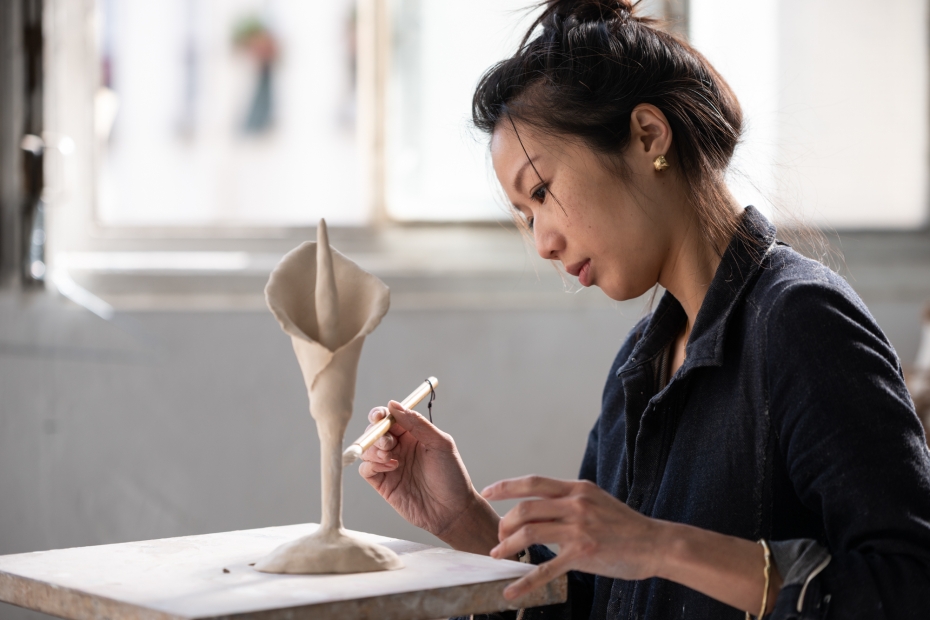As everyone is eagerly immersed in the grand sports event of the Paris Olympics, France, as the city of art, continues to shine and flourish in all its glory, and artist Lokz Phoenix is one of them.
Born in Hong Kong and currently residing in Paris, France, Lokz is a painter and ceramic artist. Although she is based abroad, her work has garnered attention in Hong Kong—during the “French May” event, she was one of the participants in the JPS Gallery joint exhibition “A Glimpse from the Bridge.” As soon as you step through the gallery doors, you are captivated by her work—the ceramic snails (also known as slugs, or colloquially as slime worms or shell-less snails) that cover the gallery walls transport you into a jungle, adding a touch of nature’s charm to the exhibition.
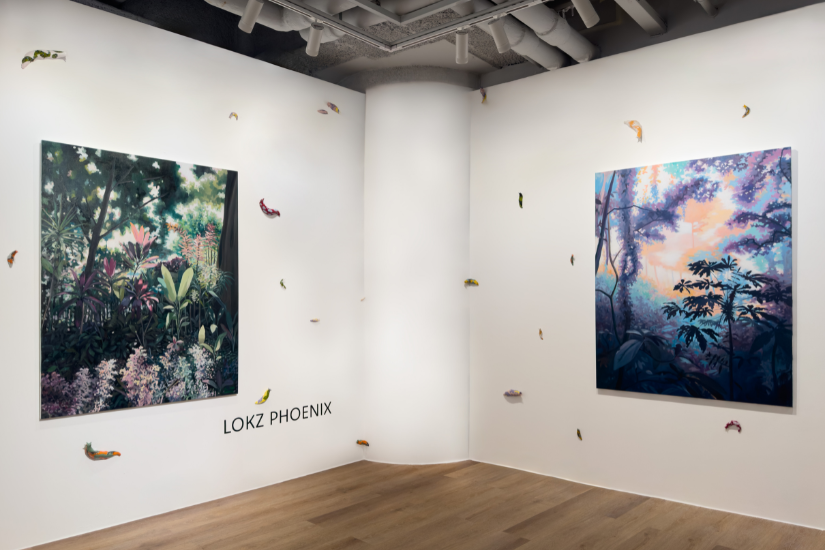
Lokz’s work showcases the lush vegetation she encountered during her travels in France and Asia. Her skilled brushwork imparts a strange and magical charm to these often-overlooked green plants, drawing viewers into her enchanting forest world.
This fleeting glance is truly unforgettable, so we invited this person from Hong Kong living in France to gently share her unbreakable bond with France and the story behind her creations.
The Beginning of the Enchanted Forest
L: Lokz Phoenix
Z:ZTYLEZ
Z: Can you describe your creation this time using three words?
L: Glimpse, revisiting the past, familial love.
Z: It feels so poetic~ I see you’ve created many ceramic slug and snail figures. What inspired this idea?
L: I discovered an orange slug in France! It has such a striking orange color, it’s amazing. I’ve never seen such a color in Hong Kong, and although it’s beautiful, everyone dislikes it because it’s considered a pest. So the idea to create cute slugs came about, and in the end, everyone started to love them again (laughs).
On the other hand, I truly enjoy combining flat (paintings) and three-dimensional (ceramics) displays. I don’t want the audience in the exhibition hall to feel like they’re only seeing paintings trapped in rectangular frames. The presence of ceramics extends the concept beyond the canvas, making the theme more vibrant and bringing the audience closer to the scenery within the paintings.
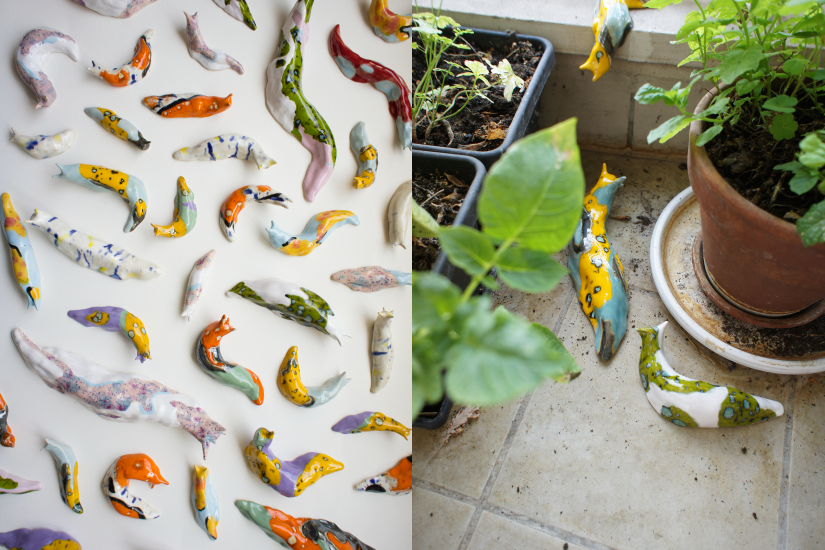
Z: Did you encounter any difficulties during the production process?
L: Difficulties? I didn’t face too many challenges with making the snot snail; it was quite relaxed, and I was even able to isolate myself from the world.
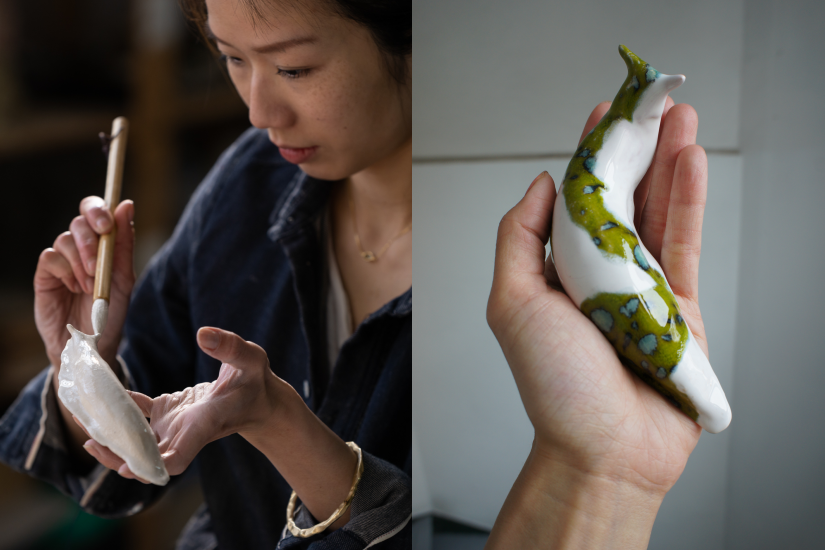
Further Reading:
- 【August Exhibition Collection】The sweltering summer weather is ever-changing! From the sacred halo to Takashi Murakami’s contracted artists, rediscover the essence of your soul with us
- Masterful Artistry! Renowned Hong Kong Ceramic Artist Leo Wong Participates in the Venice Biennale of Crafts with “Peony and Butterfly”
- Gymnastics superstar Simone Biles steals the spotlight with her pre-competition touch-up! This perfect ‘makeup’ preparation helps her secure gold, all thanks to this oil-control powder!
Everything Begins with Art
Z: Looking back, when did you become interested in artistic creation? Were there any inspiring people or works?
L: It must be my mom. She used to be a kindergarten teacher and often took my younger brother and me back to school to decorate the walls, from designing themes to selecting and cutting colored paper… Over time, we practiced a craft, and more specifically, we developed an interest in creation; because of her work, she specifically chose toys that could train our imagination and creativity, so when I was little, I didn’t have Barbies, but I had many different kinds of building blocks and sketchbooks instead. I remember that the walls within my reach at home were all painted with colorful designs. I asked, “Why don’t you stop the kids from doodling?” She said she didn’t want to hinder our developmental space (laughs).
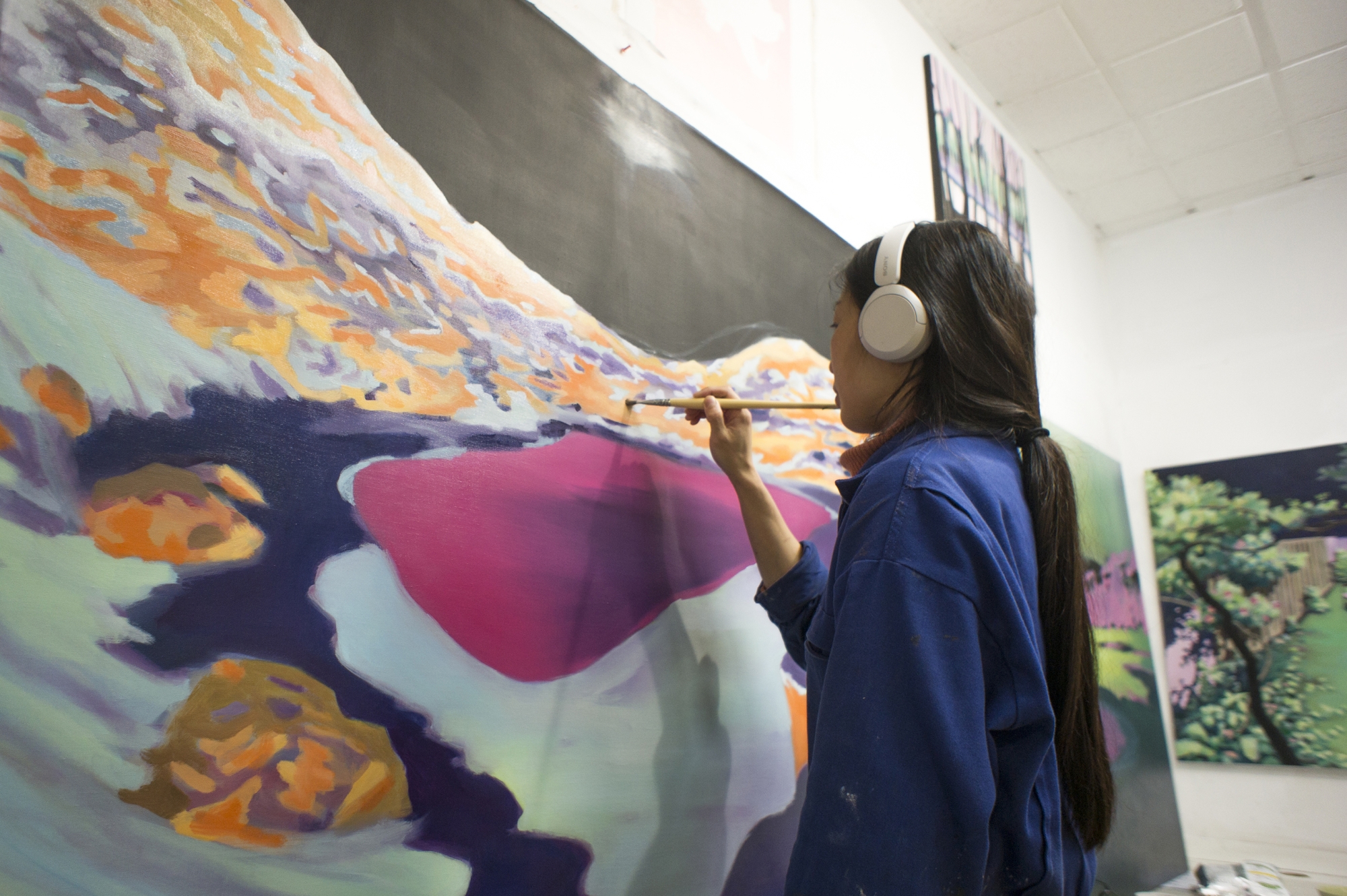
Z: I heard that before you became an illustrator, you worked at a fashion company. What sparked your decision to make that transition?
L: The opportunity to switch careers came quite casually. I had been working at the fashion company for six years when I suddenly remembered something a former elementary school classmate sitting next to me once said: “You’re such a good painter; you will definitely become an artist one day.” That inspired me to resign from my job and pursue a career as an artist.
Z: Why did you choose France (Paris) as the place to pursue your artistic career?
L: I grew up in Hong Kong and never thought of settling down elsewhere. By chance, I made quite a few French friends in Hong Kong, which sparked my interest in their culture and way of life. To better understand their conversations, I started learning French; curiosity was the first step that gradually unfolded into my life in Paris.
In my first year, to acclimate more quickly to the local life, I reached out to some newspapers in Hong Kong before my departure to pave the way for interviews in Paris. That year, I interviewed a variety of French people and wrote/illustrated their everyday experiences here, which were published weekly in Ming Pao. This led me to meet many interesting individuals and, unexpectedly, to improve my French a bit, which in turn sparked my desire to develop my career here.
To be honest, I had even booked a return ticket for six months later before arriving. Now, it’s been eight years, and my mom is quite helpless about it (laughs).
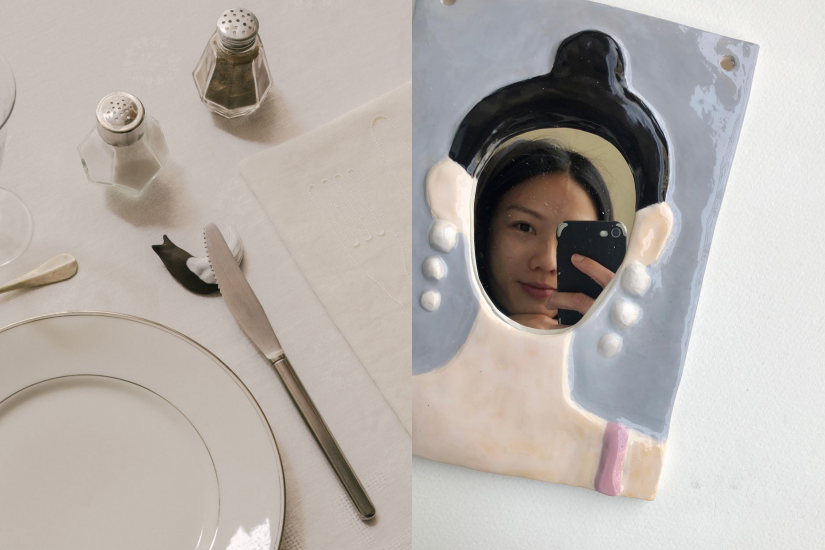
【Experience the Charm of France】
Z: What kind of city do you see Paris as?
L: My understanding of Paris was quite superficial when I was young; in my mind, it was mostly about romantic New Wave films, glamorous architecture, and renowned cuisine. Later, in my pursuit of expanding my French vocabulary, I began to engage with French literary figures and poets like Charles Baudelaire, Jacques Prevert, and Gustave Flaubert, which truly opened my eyes. At that time, I was so enchanted that I kept ordering one book after another. Before my trip, I read Lin Da’s “Taking a Book to Paris,” where the author intricately explained the historical buildings and the figures who shaped the city, such as revolutionaries, writers, and philosophers, which made me eager to explore every detail mentioned in the book upon my arrival.
Paris is a city that is both infuriating and captivating; it’s elegant yet chaotic and dirty at the same time. She is indifferent to your opinion, and even though you feel helpless, you still find yourself enchanted by her. This is how I understand Paris.
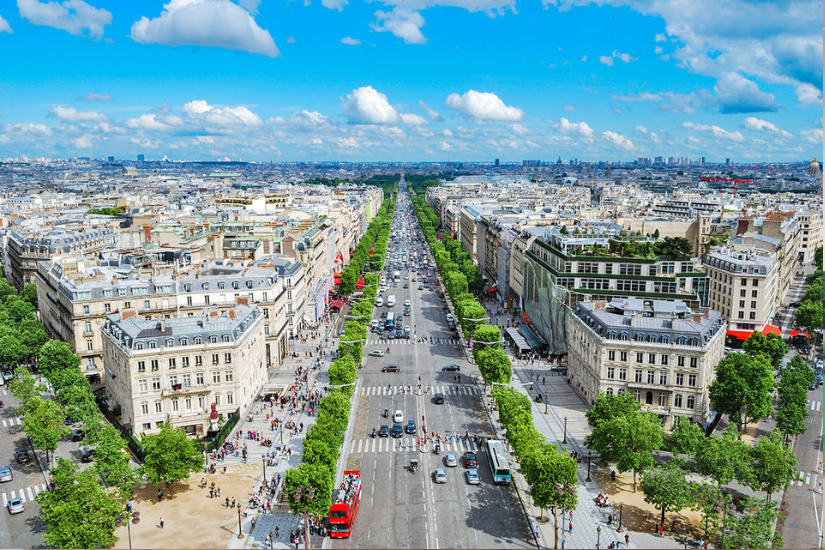
Z:From your perspective, what are the similarities and differences between the art development in Hong Kong and France?
L:Firstly, France has a much longer historical background than Hong Kong. From an artistic point of view, their fine arts academies and culture have developed to an extremely sophisticated level, with a strong emphasis on detail. Architecture, literature, fashion, film, and visual arts create a series of mutual influences that intertwine like a symphony, where every note is interconnected. The historical treasures left to the French are abundant, such as the Notre-Dame Cathedral, which began construction in 1163, inspiring Victor Hugo’s Notre-Dame de Paris and Jacques-Louis David’s Le Sacre de Napoléon; and the poetry collection Les Mains libres, which is a prime example of the mutual inspiration between artist May way and poet Paul Eluard.
In this regard, the French government provides various levels of support for artists, such as tax refunds for art purchases, encouraging people to spend in the industry, free admission to galleries, discounts on art supplies, and so on.
In contrast, Hong Kong was once a rapidly developing city where we placed more emphasis on speed and goal-oriented pursuits. We do not have deeply ingrained styles; the style of Hong Kong is constantly evolving, acting as a melting pot of various cultures. Given this, our ability to absorb new influences is relatively quick, and we are less stubborn. Our vitality, efficiency, and rapid pace are something the French find hard to keep up with (laughs).
Additionally, our unique historical values, such as the marks left by colonial rule and the fusion of Eastern and Western cultures, give Hong Kong artists a distinct edge in creativity, especially in film. I particularly admire Lizzie Wong’s “Rouge,” which delicately portrays the feminine consciousness of two generations of Hong Kong women.
Before leaving Hong Kong, both Tai Kwun and M+ had yet to open. Aside from visiting art museums in other countries, we had limited options. To a large extent, Hong Kong’s education in the arts for the public has been quite meager, at least during my time; perhaps things have changed now?
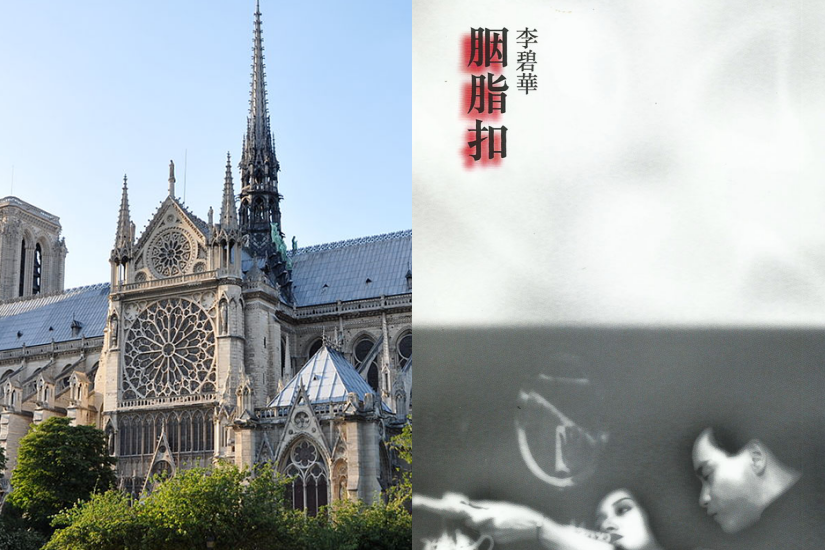
Z: Does being in different places or countries influence your artistic creation?
L: Definitely, just as plants grow differently in various soils. For instance, Paris is filled with a multitude of exhibition spaces, from indie showcases to larger venues, showcasing artworks from different countries. Observing the scale of the exhibitions, from installations to the descriptions and presentation methods, is invaluable nourishment for my creativity.
At this stage, I have started to experiment with transforming elements in my artwork from a figurative representation into abstraction. This has been a goal of mine for many years, such as exploring how to express happiness without painting a smile, but rather communicating joy through the use of color and variations in line thickness. How can distance convey loneliness? These are the kinds of thoughts I have gradually come to understand while in Paris.
About a Glimpse on the Bridge
Z: Regarding the exhibition, it is titled “Un Regard Depuis Le Pont,” how do you interpret it?
L: “Un Regard Depuis Le Pont” feels like a moment of looking back in an instant, a moment that seems to linger for several minutes in stillness, only to realize that the scenery has vanished in just a second. A glance is that precious second, isn’t it? Yet it leaves an indelible landscape. This is how I understand it.
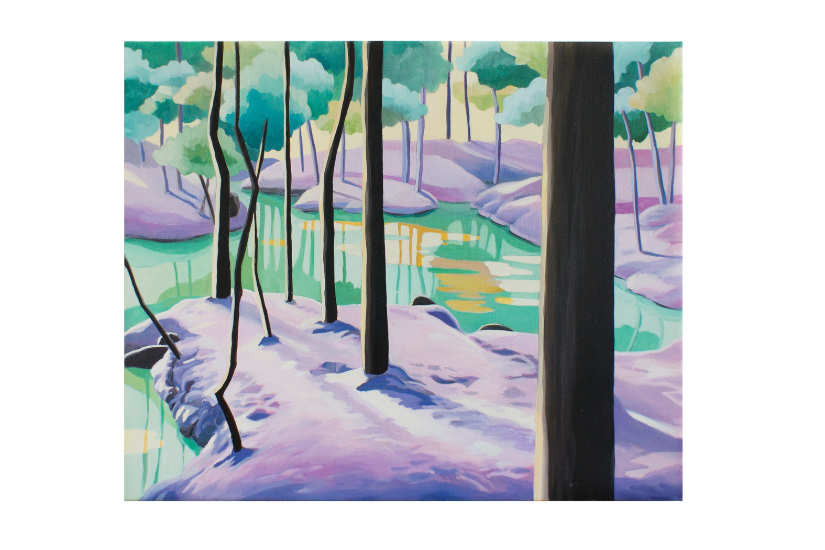
Z: Can you share a moment or memory that felt like a “glimpse from the bridge”?
L: When I was 6 years old, I sat quietly in the back seat of the school bus waiting for it to depart. My older brother’s friend, who was four years older, called out to me with a bright voice saying “Lele” the moment he stepped onto the bus. I turned around and saw the sunlight shimmering like gold behind him. Suddenly, a soundtrack played in my ears, and birds and butterflies flew above my head. To this day, I still remember the enchanting and radiant smile of his that created all those illusions for me, perhaps just for a second.
Z: From the previously created “Sunu,” to the “Into the Wild” series showcased at JPS, what prompted this transformation?
L: The inspiration for “Sunu” came from the distorted aesthetic perceptions of female body image that I experienced while growing up in Hong Kong. After arriving in Paris, the atmosphere I encountered was quite different, and this theme naturally faded away.
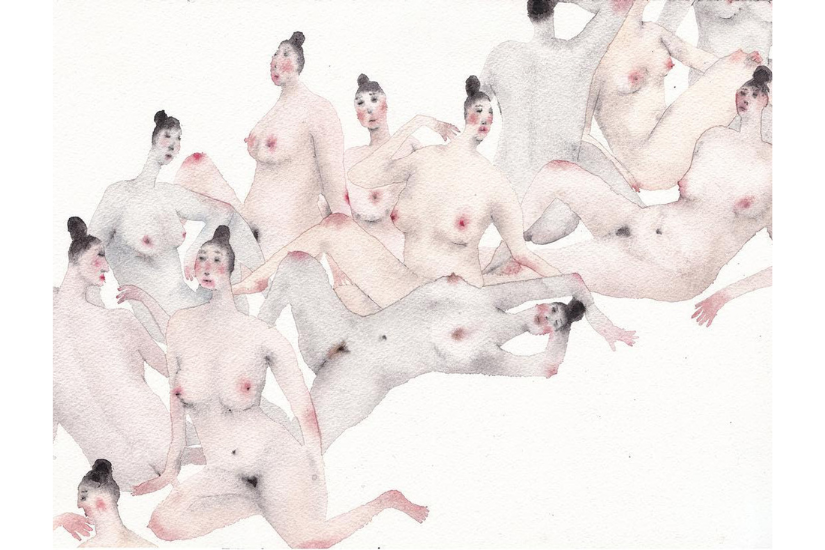
Z: Why did you choose a post-rain forest as the theme? What feelings do you hope to evoke in people?
L: This work is inspired by the mountain forests of Asia. Due to Covid, I hadn’t returned to Hong Kong for three and a half years. After such a long separation, I felt especially moved while strolling with my parents on Lamma Island, capturing many photos. Upon returning to Paris, I revisited those memories from my phone’s album and selected the moments that touched me deeply to create this work. I often think back to those walks with my parents, which are such precious and luxurious memories under the circumstances of being apart; having spent so long in the city, I increasingly yearn for nature. The interplay of light and shadow in the forest, the damp earth mixed with the scent of rain, ant hills, birdsong, and more, creates an almost dreamlike experience, where I could even hear the gentle breeze rustling the treetops and leaves. I hope to share that moment of inspiration with my audience.
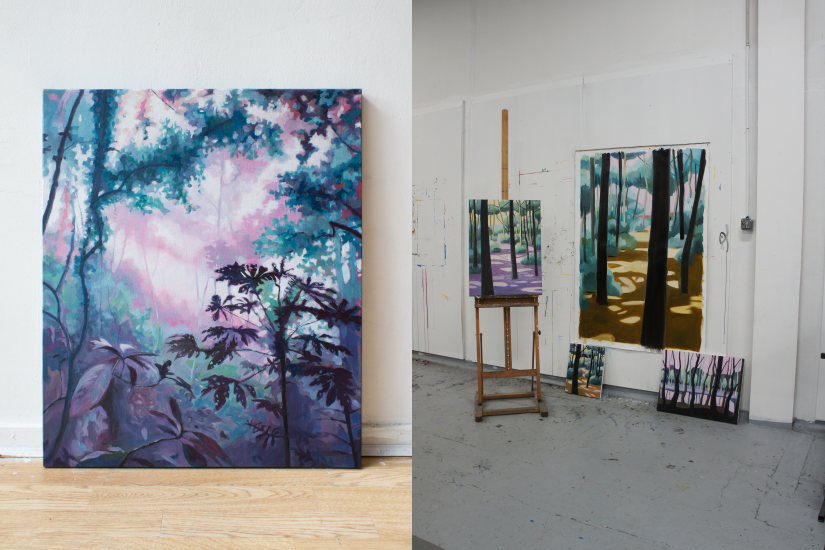
Z: In your opinion, is there a different sense of nature between Hong Kong and France?
L: During my time in France, I visited many forests and mountains in the suburbs of Paris, such as the Pyrénées and Manosque. I was deeply captivated by the towering mountains and forests. The climate in France is quite dry, and the trees are not as dense as those in Hong Kong, but it creates a different kind of scenery. I am a native of Lamma Island, and I grew up surrounded by various plants and animals. I enjoyed running in the mountains and collecting shells and nectar on the beach. My travels in the French mountains evoked memories of my childhood, which became the inspiration for my work, “Into the Wild.”
【Beyond Creation】
Z: Can you share your studio / creative environment?
L: My requirements for a studio are quite simple; it needs to be very close to my home (laughs). Because I often forget to bring this or that, or suddenly want to add a stroke to my work, or have someone come by to see my paintings, etc. My current studio is only a 5-minute bike ride from home, which is very comforting.
Z: What’s the first thing you want to do when you return to Hong Kong?
L: I really want to eat some dim sum (laughs).
Z: The most unforgettable work?
L: The ceramic series “Le Bain” (Bathing). The 2019 exhibition showcased a watercolor depiction of a variety of scenarios that occur in a bathtub: lovers embracing, bathing with a puppy, a playful little black cat in the water, moments of solitary joy, and so on. I have always wished to transform this series into three-dimensional pieces, which led me to self-learn ceramics. The process was quite challenging; for instance, the clay melted in the kiln, and the kiln itself got damaged (cries). Therefore, the relief and joy upon succeeding are hard to put into words. Furthermore, “Le Bain” is composed of stories that have actually happened, with the work embodying a lot of romance and, for me personally, it is filled with love.
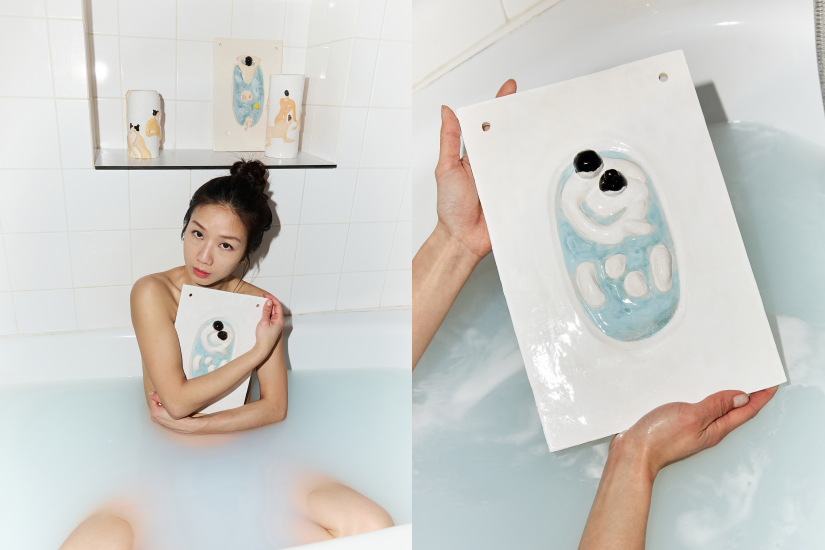
Z: Can you share your creative motto with everyone?
L: Stay curious, and never become a dull adult.

